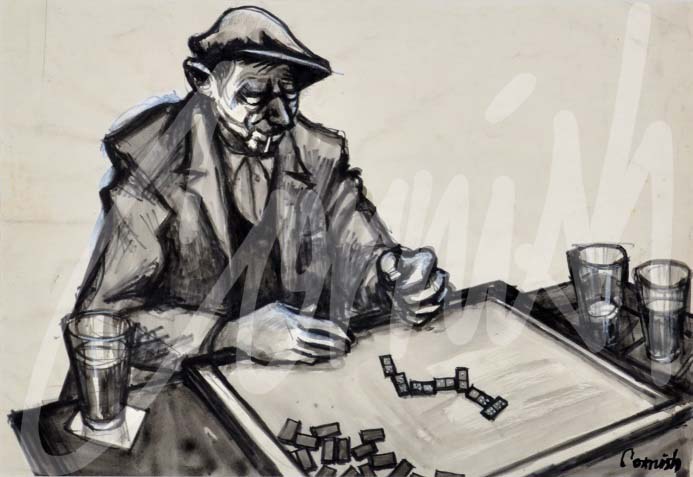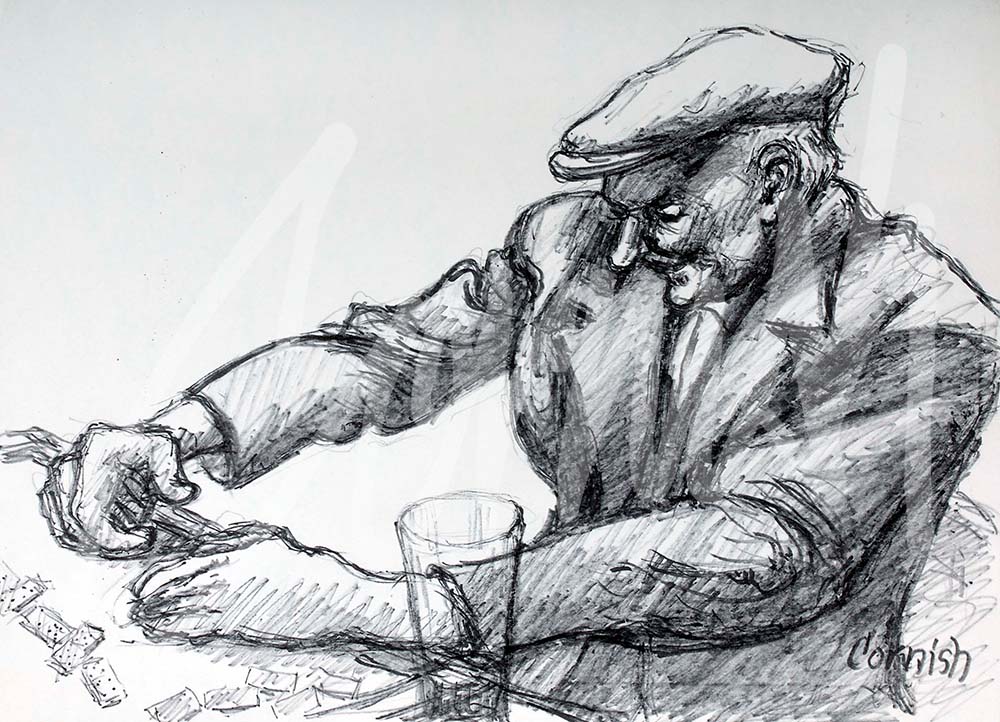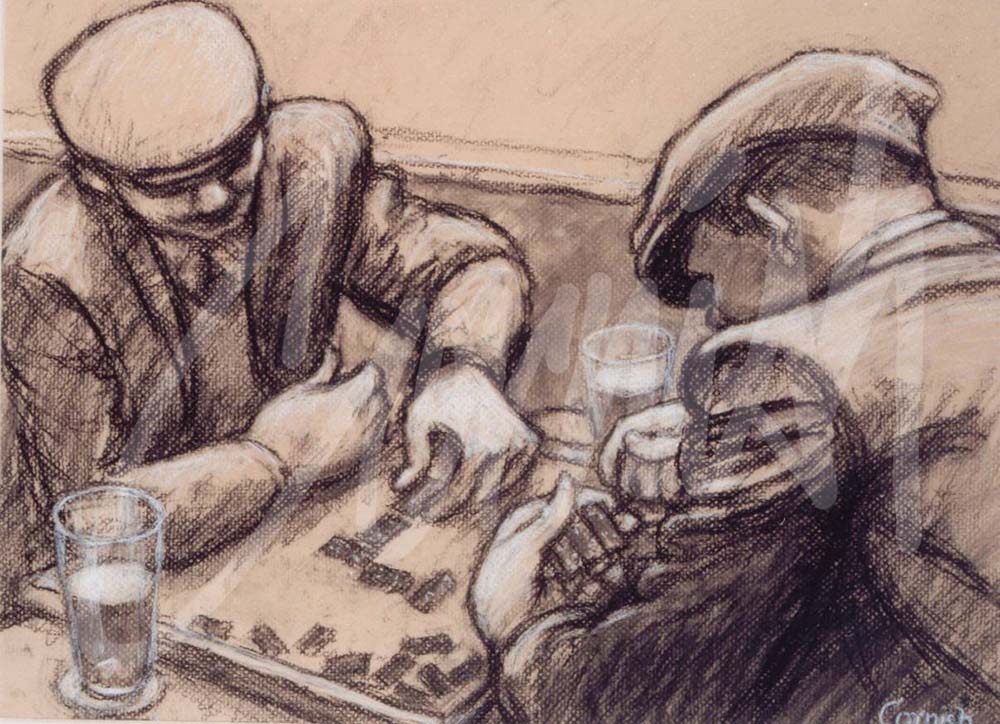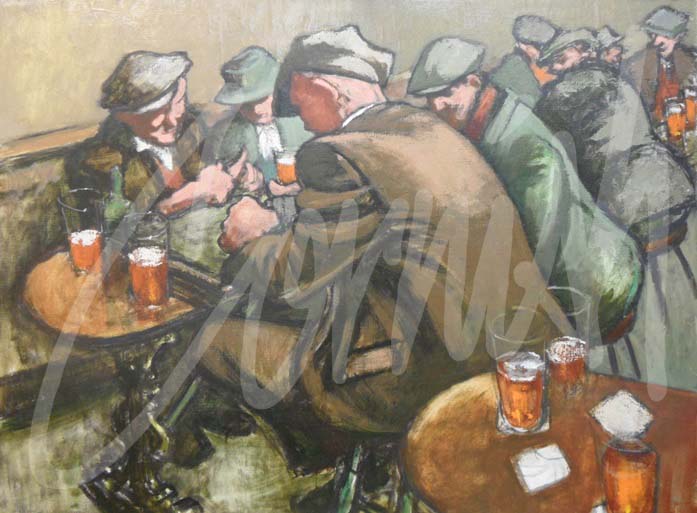
Latest News

A Canny Hand:
Cornish’s work is noted for the quality of his drawings, often made quickly to catch a moment in time. His jacket was adapted by his wife Sarah who created a ‘poachers pocket’ on the inside, large enough to hold his sketchbook and Flo-master pen so that wherever he went his sketchbook and pen were always with him. During his era there were over 35 pubs in Spennymoor and at times they were busy with men not only ‘enjoying the craic’ but often playing dominoes or darts, which were a common feature in all of the pubs in the region and beyond.
A canny (good) hand would be a common term used by domino players in the pubs where the game flourished and sometimes involved competitions amongst the men. The ‘doms’ would often be held in both hands to shield the numbers on the domino pieces from other players. Experienced players could quietly guess the dominoes held by other players as the games progressed. The hands would deliberately rest on the edge of the table to avoid disclosure of ‘the hand’. Powerful hands from working men would nevertheless create a study in concentration, assessing the next move and a big decision.
Cornish blended in, he was ‘one of the lads.’ A few hours earlier he would most likely have been working underground, and when he sat down in a pub with his favourite bottle of Newcastle Brown Ale he would immediately begin to observe and absorb whatever human interaction emerged unscripted. A treasure trove for an artist of his calibre and uncanny ability to quickly record what was happening all around him. His ability to sketch and draw with speed and accuracy, to capture a moment in time, was fundamental towards his future success.
Cornish returned to the theme of the pub throughout his career. Bar scenes with individual character drawings, men playing dominoes, convivial conversations, and drawings of darts players. He also made detailed drawings of the beer pumps, furnishings, pint glasses and posters to ensure accuracy in his work. These features sometimes appear as individual component pictures because of their own special qualities and occasionally they are brought together in large composite paintings. Most of Cornish’s larger works involving many characters are constructed in this manner.
Behind The Scenes: The Norman Cornish Sketchbooks is available at www.normancornish.com The book contains examples of the drawings and preparatory sketches alongside many of the completed paintings in bar scenes. The Foreword was written by Melvyn Bragg.





